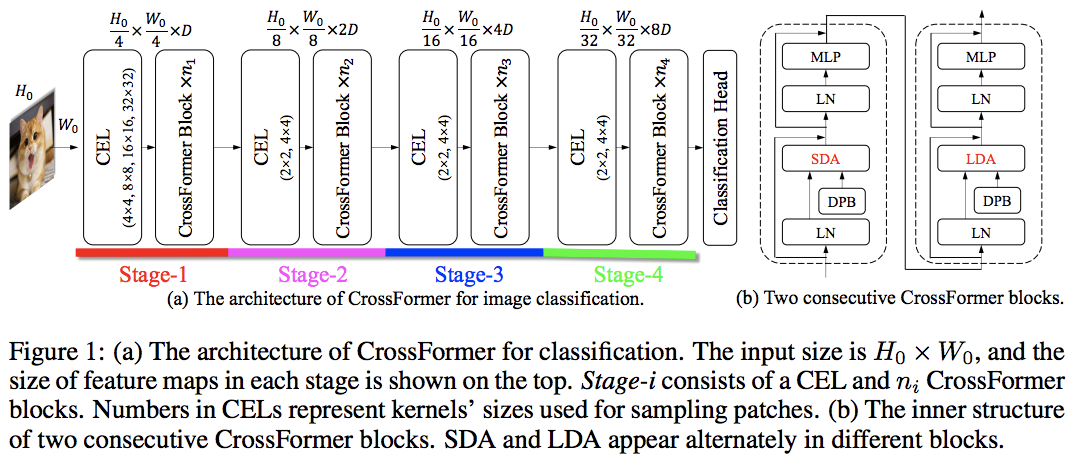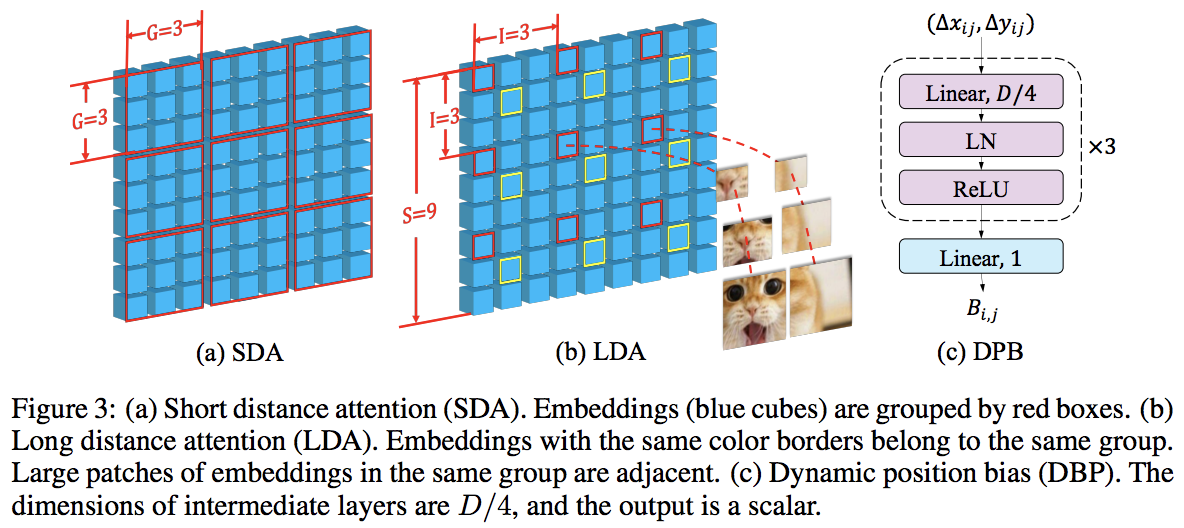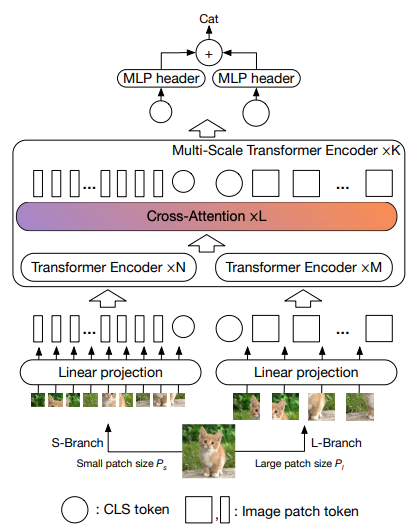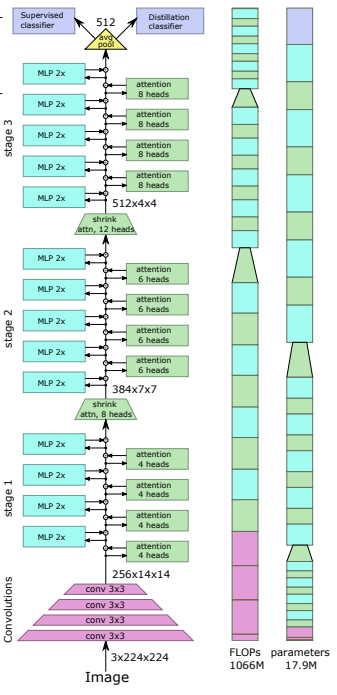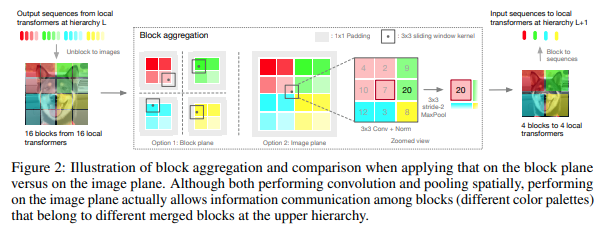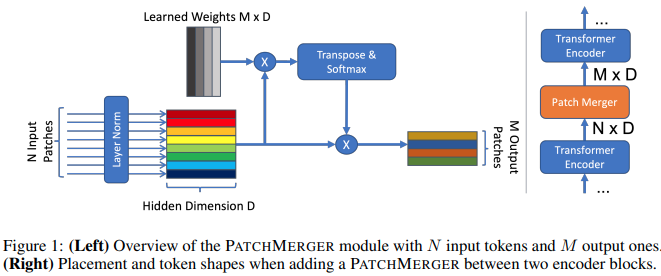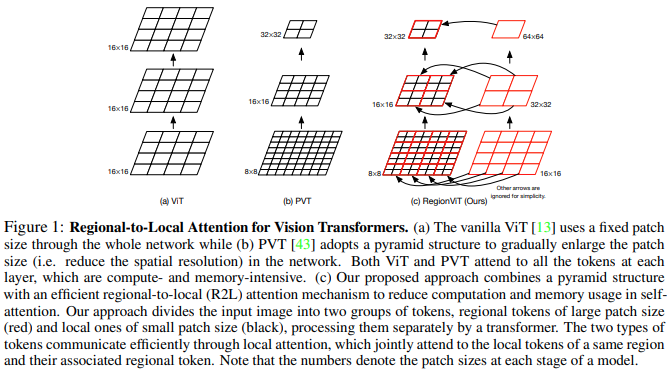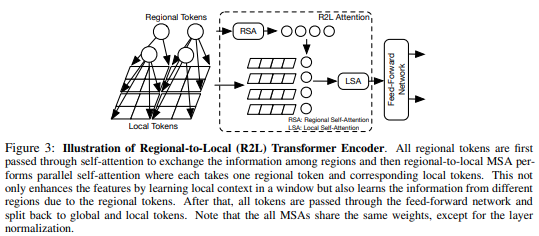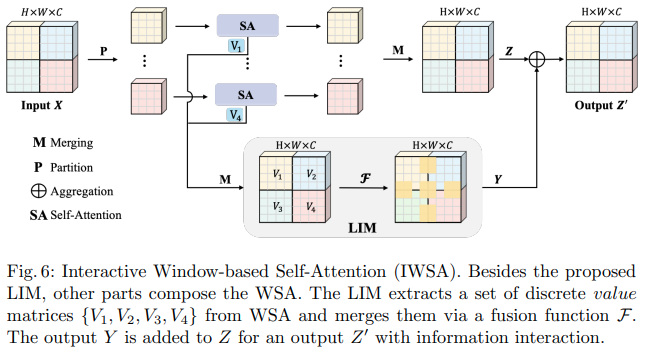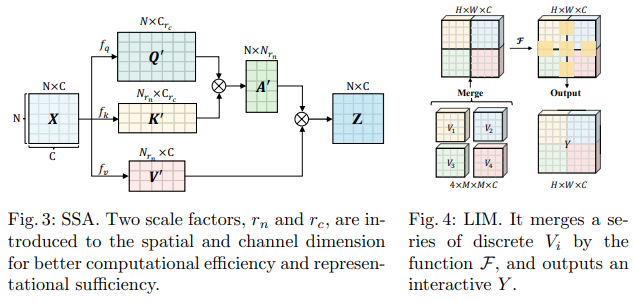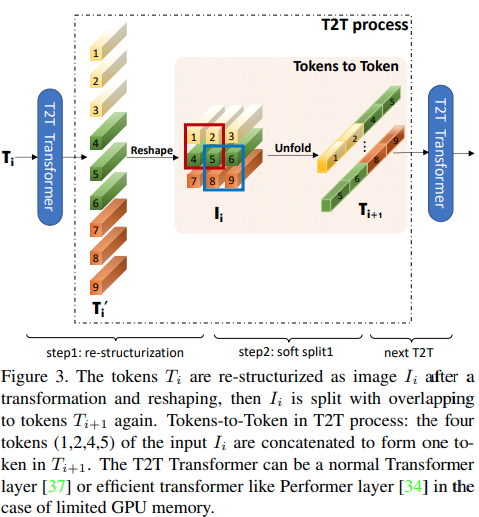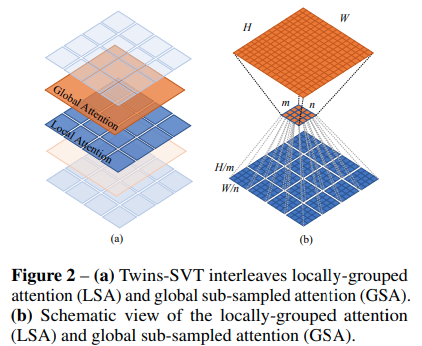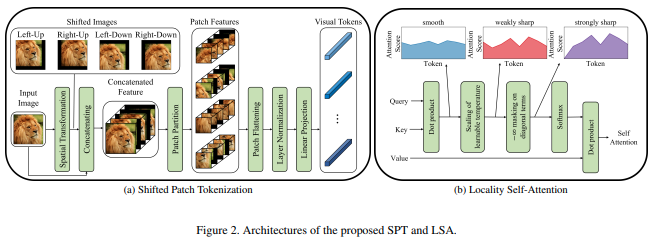Implementation of Vision Transformer, a simple way to achieve SOTA in vision classification with only a single transformer encoder, in Google's JAX and Flax.
This repository has been created in collaboration with Dr. Phil 'Lucid' Wang. Please check out his open-source implementations of multiple different transformer architectures and support his work.
key = jax.random.PRNGKey(0)
img = jax.random.normal(key, (1, 256, 256, 3))
v = ViT(
image_size = 256,
patch_size = 32,
num_classes = 1000,
dim = 1024,
depth = 6,
heads = 16,
mlp_dim = 2048,
dropout = 0.1,
emb_dropout = 0.1,
)
init_rngs = {'params': jax.random.PRNGKey(1),
'dropout': jax.random.PRNGKey(2),
'emb_dropout': jax.random.PRNGKey(3)}
params = v.init(init_rngs, img)
output = v.apply(params, img, rngs=init_rngs)
print(output.shape) # (1, 1000)
n_params_flax = sum(
jax.tree_leaves(jax.tree_map(lambda x: np.prod(x.shape), params))
)
print(f"Number of parameters in Flax model: {n_params_flax}")"Transformers have been recently adapted for large scale image classification, achieving high scores shaking up the long supremacy of convolutional neural networks. However the optimization of image transformers has been little studied so far. In this work, we build and optimize deeper transformer networks for image classification. In particular, we investigate the interplay of architecture and optimization of such dedicated transformers. We make two transformers architecture changes that significantly improve the accuracy of deep transformers. This leads us to produce models whose performance does not saturate early with more depth, for instance we obtain 86.5% top-1 accuracy on Imagenet when training with no external data, we thus attain the current SOTA with less FLOPs and parameters. Moreover, our best model establishes the new state of the art on Imagenet with Reassessed labels and Imagenet-V2 / match frequency, in the setting with no additional training data. We share our code and models." - Hugo Touvron, Matthieu Cord, Alexandre Sablayrolles, Gabriel Synnaeve, Hervé Jégou
import numpy as np
key = jax.random.PRNGKey(0)
img = jax.random.normal(key, (1, 256, 256, 3))
v = CaiT(
image_size = 256,
patch_size = 32,
num_classes = 1000,
dim = 1024,
depth = 12, # depth of transformer for patch to patch attention only
cls_depth = 2, # depth of cross attention of CLS tokens to patch
heads = 16,
mlp_dim = 2048,
dropout = 0.1,
emb_dropout = 0.1,
layer_dropout = 0.05 # randomly dropout 5% of the layers
)
init_rngs = {'params': jax.random.PRNGKey(1),
'dropout': jax.random.PRNGKey(2),
'emb_dropout': jax.random.PRNGKey(3)}
params = v.init(init_rngs, img)
output = v.apply(params, img, rngs=init_rngs)
print(output.shape)
n_params_flax = sum(
jax.tree_leaves(jax.tree_map(lambda x: np.prod(x.shape), params))
)
print(f"Number of parameters in Flax model: {n_params_flax}")"Transformers have made great progress in dealing with computer vision tasks. However, existing vision transformers do not yet possess the ability of building the interactions among features of different scales, which is perceptually important to visual inputs. The reasons are two-fold: (1) Input embeddings of each layer are equal-scale, so no cross-scale feature can be extracted; (2) to lower the computational cost, some vision transformers merge adjacent embeddings inside the self-attention module, thus sacrificing small-scale (fine-grained) features of the embeddings and also disabling the cross-scale interactions. To this end, we propose Cross-scale Embedding Layer (CEL) and Long Short Distance Attention (LSDA). On the one hand, CEL blends each embedding with multiple patches of different scales, providing the self-attention module itself with cross-scale features. On the other hand, LSDA splits the self-attention module into a short-distance one and a long-distance counterpart, which not only reduces the computational burden but also keeps both small-scale and large-scale features in the embeddings. Through the above two designs, we achieve cross-scale attention. Besides, we put forward a dynamic position bias for vision transformers to make the popular relative position bias apply to variable-sized images. Hinging on the cross-scale attention module, we construct a versatile vision architecture, dubbed CrossFormer, which accommodates variable-sized inputs. Extensive experiments show that CrossFormer outperforms the other vision transformers on image classification, object detection, instance segmentation, and semantic segmentation tasks." - Wenxiao Wang, Lu Yao, Long Chen, Binbin Lin, Deng Cai, Xiaofei He, Wei Liu
import numpy as np
key = jax.random.PRNGKey(0)
img = jax.random.normal(key, (1, 224, 224, 3))
v = CrossFormer(
num_classes = 1000, # number of output classes
dim = (64, 128, 256, 512), # dimension at each stage
depth = (2, 2, 8, 2), # depth of transformer at each stage
global_window_size = (8, 4, 2, 1), # global window sizes at each stage
local_window_size = 7, # local window size (can be customized for each stage, but in paper, held constant at 7 for all stages)
)
init_rngs = {'params': jax.random.PRNGKey(1),
'dropout': jax.random.PRNGKey(2)}
params = v.init(init_rngs, img)
output = v.apply(params, img, rngs=init_rngs)
print(output.shape)
n_params_flax = sum(
jax.tree_leaves(jax.tree_map(lambda x: np.prod(x.shape), params))
)
print(f"Number of parameters in Flax model: {n_params_flax}")"The recently developed vision transformer (ViT) has achieved promising results on image classification compared to convolutional neural networks. Inspired by this, in this paper, we study how to learn multi-scale feature representations in transformer models for image classification. To this end, we propose a dual-branch transformer to combine image patches (i.e., tokens in a transformer) of different sizes to produce stronger image features. Our approach processes small-patch and large-patch tokens with two separate branches of different computational complexity and these tokens are then fused purely by attention multiple times to complement each other. Furthermore, to reduce computation, we develop a simple yet effective token fusion module based on cross attention, which uses a single token for each branch as a query to exchange information with other branches. Our proposed cross-attention only requires linear time for both computational and memory complexity instead of quadratic time otherwise. Extensive experiments demonstrate that our approach performs better than or on par with several concurrent works on vision transformer, in addition to efficient CNN models. For example, on the ImageNet1K dataset, with some architectural changes, our approach outperforms the recent DeiT by a large margin of 2% with a small to moderate increase in FLOPs and model parameters." - Chun-Fu Chen, Quanfu Fan, Rameswar Panda
import numpy
key = jax.random.PRNGKey(0)
img = jax.random.normal(key, (1, 256, 256, 3))
v = CrossViT(
image_size = 256,
num_classes = 1000,
depth = 4, # number of multi-scale encoding blocks
sm_dim = 192, # high res dimension
sm_patch_size = 16, # high res patch size (should be smaller than lg_patch_size)
sm_enc_depth = 2, # high res depth
sm_enc_heads = 8, # high res heads
sm_enc_mlp_dim = 2048, # high res feedforward dimension
lg_dim = 384, # low res dimension
lg_patch_size = 64, # low res patch size
lg_enc_depth = 3, # low res depth
lg_enc_heads = 8, # low res heads
lg_enc_mlp_dim = 2048, # low res feedforward dimensions
cross_attn_depth = 2, # cross attention rounds
cross_attn_heads = 8, # cross attention heads
dropout = 0.1,
emb_dropout = 0.1
)
init_rngs = {'params': jax.random.PRNGKey(1),
'dropout': jax.random.PRNGKey(2),
'emb_dropout': jax.random.PRNGKey(3)}
params = v.init(init_rngs, img)
output = v.apply(params, img, rngs=init_rngs)
print(output.shape)
n_params_flax = sum(
jax.tree_leaves(jax.tree_map(lambda x: numpy.prod(x.shape), params))
)
print(f"Number of parameters in Flax model: {n_params_flax}")"We present in this paper a new architecture, named Convolutional vision Transformer (CvT), that improves Vision Transformer (ViT) in performance and efficiency by introducing convolutions into ViT to yield the best of both designs. This is accomplished through two primary modifications: a hierarchy of Transformers containing a new convolutional token embedding, and a convolutional Transformer block leveraging a convolutional projection. These changes introduce desirable properties of convolutional neural networks (CNNs) to the ViT architecture (\ie shift, scale, and distortion invariance) while maintaining the merits of Transformers (\ie dynamic attention, global context, and better generalization). We validate CvT by conducting extensive experiments, showing that this approach achieves state-of-the-art performance over other Vision Transformers and ResNets on ImageNet-1k, with fewer parameters and lower FLOPs. In addition, performance gains are maintained when pretrained on larger datasets (\eg ImageNet-22k) and fine-tuned to downstream tasks. Pre-trained on ImageNet-22k, our CvT-W24 obtains a top-1 accuracy of 87.7% on the ImageNet-1k val set. Finally, our results show that the positional encoding, a crucial component in existing Vision Transformers, can be safely removed in our model, simplifying the design for higher resolution vision tasks." - Haiping Wu, Bin Xiao, Noel Codella, Mengchen Liu, Xiyang Dai, Lu Yuan, Lei Zhang
import numpy
key = jax.random.PRNGKey(0)
img = jax.random.normal(key, (1, 256, 256, 3))
v = CvT(
num_classes = 1000,
s1_emb_dim = 64, # stage 1 - dimension
s1_emb_kernel = 7, # stage 1 - conv kernel
s1_emb_stride = 4, # stage 1 - conv stride
s1_proj_kernel = 3, # stage 1 - attention ds-conv kernel size
s1_kv_proj_stride = 2, # stage 1 - attention key / value projection stride
s1_heads = 1, # stage 1 - heads
s1_depth = 1, # stage 1 - depth
s1_mlp_mult = 4, # stage 1 - feedforward expansion factor
s2_emb_dim = 192, # stage 2 - (same as above)
s2_emb_kernel = 3,
s2_emb_stride = 2,
s2_proj_kernel = 3,
s2_kv_proj_stride = 2,
s2_heads = 3,
s2_depth = 2,
s2_mlp_mult = 4,
s3_emb_dim = 384, # stage 3 - (same as above)
s3_emb_kernel = 3,
s3_emb_stride = 2,
s3_proj_kernel = 3,
s3_kv_proj_stride = 2,
s3_heads = 4,
s3_depth = 10,
s3_mlp_mult = 4,
dropout = 0.
)
init_rngs = {'params': jax.random.PRNGKey(1),
'dropout': jax.random.PRNGKey(2)}
params = v.init(init_rngs, img)
output = v.apply(params, img, mutable=['batch_stats'], rngs=init_rngs)
n_params_flax = sum(
jax.tree_leaves(jax.tree_map(lambda x: numpy.prod(x.shape), params))
)
print(f"Number of parameters in Flax model: {n_params_flax}")"Vision transformers (ViTs) have been successfully applied in image classification tasks recently. In this paper, we show that, unlike convolution neural networks (CNNs)that can be improved by stacking more convolutional layers, the performance of ViTs saturate fast when scaled to be deeper. More specifically, we empirically observe that such scaling difficulty is caused by the attention collapse issue: as the transformer goes deeper, the attention maps gradually become similar and even much the same after certain layers. In other words, the feature maps tend to be identical in the top layers of deep ViT models. This fact demonstrates that in deeper layers of ViTs, the self-attention mechanism fails to learn effective concepts for representation learning and hinders the model from getting expected performance gain. Based on above observation, we propose a simple yet effective method, named Re-attention, to re-generate the attention maps to increase their diversity at different layers with negligible computation and memory cost. The pro-posed method makes it feasible to train deeper ViT models with consistent performance improvements via minor modification to existing ViT models. Notably, when training a deep ViT model with 32 transformer blocks, the Top-1 classification accuracy can be improved by 1.6% on ImageNet." - Daquan Zhou, Bingyi Kang, Xiaojie Jin, Linjie Yang, Xiaochen Lian, Zihang Jiang, Qibin Hou, Jiashi Feng
import numpy as np
key = jax.random.PRNGKey(0)
img = jax.random.normal(key, (1, 256, 256, 3))
v = DeepViT(
image_size = 256,
patch_size = 32,
num_classes = 1000,
dim = 1024,
depth = 6,
heads = 16,
mlp_dim = 2048,
dropout = 0.1,
emb_dropout = 0.1
)
init_rngs = {'params': jax.random.PRNGKey(1),
'dropout': jax.random.PRNGKey(2),
'emb_dropout': jax.random.PRNGKey(3)}
params = v.init(init_rngs, img)
output = v.apply(params, img, rngs=init_rngs)
print(output.shape)
n_params_flax = sum(
jax.tree_leaves(jax.tree_map(lambda x: np.prod(x.shape), params))
)
print(f"Number of parameters in Flax model: {n_params_flax}")"We design a family of image classification architectures that optimize the trade-off between accuracy and efficiency in a high-speed regime. Our work exploits recent findings in attention-based architectures, which are competitive on highly parallel processing hardware. We revisit principles from the extensive literature on convolutional neural networks to apply them to transformers, in particular activation maps with decreasing resolutions. We also introduce the attention bias, a new way to integrate positional information in vision transformers. As a result, we propose LeVIT: a hybrid neural network for fast inference image classification. We consider different measures of efficiency on different hardware platforms, so as to best reflect a wide range of application scenarios. Our extensive experiments empirically validate our technical choices and show they are suitable to most architectures. Overall, LeViT significantly outperforms existing convnets and vision transformers with respect to the speed/accuracy tradeoff. For example, at 80% ImageNet top-1 accuracy, LeViT is 5 times faster than EfficientNet on CPU."
import numpy
key = jax.random.PRNGKey(0)
img = jax.random.normal(key, (1, 224, 224, 3))
v = LeViT(
image_size = 224,
num_classes = 1000,
stages = 3, # number of stages
dim = (256, 384, 512), # dimensions at each stage
depth = 4, # transformer of depth 4 at each stage
heads = (4, 6, 8), # heads at each stage
mlp_mult = 2,
dropout = 0.1
)
init_rngs = {'params': jax.random.PRNGKey(1),
'dropout': jax.random.PRNGKey(2)}
params = v.init(init_rngs, img)
output = v.apply(params, img, mutable=['batch_stats'], rngs=init_rngs)
n_params_flax = sum(
jax.tree_leaves(jax.tree_map(lambda x: numpy.prod(x.shape), params))
)
print(f"Number of parameters in Flax model: {n_params_flax}")"Hierarchical structures are popular in recent vision transformers, however, they require sophisticated designs and massive datasets to work well. In this paper, we explore the idea of nesting basic local transformers on non-overlapping image blocks and aggregating them in a hierarchical way. We find that the block aggregation function plays a critical role in enabling cross-block non-local information communication. This observation leads us to design a simplified architecture that requires minor code changes upon the original vision transformer. The benefits of the proposed judiciously-selected design are threefold: (1) NesT converges faster and requires much less training data to achieve good generalization on both ImageNet and small datasets like CIFAR; (2) when extending our key ideas to image generation, NesT leads to a strong decoder that is 8× faster than previous transformer-based generators; and (3) we show that decoupling the feature learning and abstraction processes via this nested hierarchy in our design enables constructing a novel method (named GradCAT) for visually interpreting the learned model." - Zizhao Zhang, Han Zhang, Long Zhao, Ting Chen, Sercan O. Arik, Tomas Pfister
import numpy
key = jax.random.PRNGKey(0)
img = jax.random.normal(key, (1, 224, 224, 3))
v = NesT(
image_size = 224,
patch_size = 4,
dim = 96,
heads = 3,
num_hierarchies = 3, # number of hierarchies
block_repeats = (2, 2, 8), # the number of transformer blocks at each heirarchy, starting from the bottom
num_classes = 1000
)
init_rngs = {'params': jax.random.PRNGKey(1),
'dropout': jax.random.PRNGKey(2)}
params = v.init(init_rngs, img)
output = v.apply(params, img, rngs=init_rngs)
print(output.shape)
n_params_flax = sum(
jax.tree_leaves(jax.tree_map(lambda x: numpy.prod(x.shape), params))
)
print(f"Number of parameters in Flax model: {n_params_flax}")"After their initial success in natural language processing, transformer architectures have rapidly gained traction in computer vision, providing state-of-the-art results for tasks such as image classification, detection, segmentation, and video analysis. We offer three insights based on simple and easy to implement variants of vision transformers. (1) The residual layers of vision transformers, which are usually processed sequentially, can to some extent be processed efficiently in parallel without noticeably affecting the accuracy. (2) Fine-tuning the weights of the attention layers is sufficient to adapt vision transformers to a higher resolution and to other classification tasks. This saves compute, reduces the peak memory consumption at fine-tuning time, and allows sharing the majority of weights across tasks. (3) Adding MLP-based patch pre-processing layers improves Bert-like self-supervised training based on patch masking. We evaluate the impact of these design choices using the ImageNet-1k dataset, and confirm our findings on the ImageNet-v2 test set. Transfer performance is measured across six smaller datasets." - Hugo Touvron, Matthieu Cord, Alaaeldin El-Nouby, Jakob Verbeek, Hervé Jégou
import numpy as np
key = jax.random.PRNGKey(0)
img = jax.random.normal(key, (1, 256, 256, 3))
v = ViT(
image_size = 256,
patch_size = 16,
num_classes = 1000,
dim = 1024,
depth = 6,
heads = 8,
mlp_dim = 2048,
num_parallel_branches = 2, # in paper, they claimed 2 was optimal
dropout = 0.1,
emb_dropout = 0.1
)
init_rngs = {'params': jax.random.PRNGKey(1),
'dropout': jax.random.PRNGKey(2),
'emb_dropout': jax.random.PRNGKey(3)}
params = v.init(init_rngs, img)
output = v.apply(params, img, rngs=init_rngs)
print(output.shape)
n_params_flax = sum(
jax.tree_leaves(jax.tree_map(lambda x: np.prod(x.shape), params))
)
print(f"Number of parameters in Flax model: {n_params_flax}")"Transformers are widely applied to solve natural language understanding and computer vision tasks. While scaling up these architectures leads to improved performance, it often comes at the expense of much higher computational costs. In order for large-scale models to remain practical in real-world systems, there is a need for reducing their computational overhead. In this work, we present the PatchMerger, a simple module that reduces the number of patches or tokens the network has to process by merging them between two consecutive intermediate layers. We show that the PatchMerger achieves a significant speedup across various model sizes while matching the original performance both upstream and downstream after fine-tuning." - Cedric Renggli, André Susano Pinto, Neil Houlsby, Basil Mustafa, Joan Puigcerver, Carlos Riquelme
import numpy as np
key = jax.random.PRNGKey(0)
img = jax.random.normal(key, (1, 256, 256, 3))
v = ViT(
image_size = 256,
patch_size = 16,
num_classes = 1000,
dim = 1024,
depth = 12,
heads = 8,
patch_merge_layer = 6, # at which transformer layer to do patch merging
patch_merge_num_tokens = 8, # the output number of tokens from the patch merge
mlp_dim = 2048,
dropout = 0.1,
emb_dropout = 0.1
)
init_rngs = {'params': jax.random.PRNGKey(1),
'dropout': jax.random.PRNGKey(2),
'emb_dropout': jax.random.PRNGKey(3)}
params = v.init(init_rngs, img)
output = v.apply(params, img, rngs=init_rngs)
print(output.shape)
n_params_flax = sum(
jax.tree_leaves(jax.tree_map(lambda x: np.prod(x.shape), params))
)
print(f"Number of parameters in Flax model: {n_params_flax}")
key = jax.random.PRNGKey(5)
features = jax.random.normal(key, (4, 256, 1024))
merger = PatchMerger(
dim = 1024,
num_tokens_out = 8 # output number of tokens
)
merger_params = merger.init(init_rngs, features)
merger_output = merger.apply(merger_params, features)
print(merger_output.shape)"Vision Transformer (ViT) extends the application range of transformers from language processing to computer vision tasks as being an alternative architecture against the existing convolutional neural networks (CNN). Since the transformer-based architecture has been innovative for computer vision modeling, the design convention towards an effective architecture has been less studied yet. From the successful design principles of CNN, we investigate the role of spatial dimension conversion and its effectiveness on transformer-based architecture. We particularly attend to the dimension reduction principle of CNNs; as the depth increases, a conventional CNN increases channel dimension and decreases spatial dimensions. We empirically show that such a spatial dimension reduction is beneficial to a transformer architecture as well, and propose a novel Pooling-based Vision Transformer (PiT) upon the original ViT model. We show that PiT achieves the improved model capability and generalization performance against ViT. Throughout the extensive experiments, we further show PiT outperforms the baseline on several tasks such as image classification, object detection, and robustness evaluation." - Byeongho Heo, Sangdoo Yun, Dongyoon Han, Sanghyuk Chun, Junsuk Choe, Seong Joon Oh
import numpy
key = jax.random.PRNGKey(0)
img = jax.random.normal(key, (1, 224, 224, 3))
v = PiT(
image_size = 224,
patch_size = 14,
dim = 256,
num_classes = 1000,
depth = (3, 3, 3), # list of depths, indicating the number of rounds of each stage before a downsample
heads = 16,
mlp_dim = 2048,
dropout = 0.1,
emb_dropout = 0.1
)
init_rngs = {'params': jax.random.PRNGKey(1),
'dropout': jax.random.PRNGKey(2),
'emb_dropout': jax.random.PRNGKey(3)}
params = v.init(init_rngs, img)
output = v.apply(params, img, rngs=init_rngs)
print(output.shape)
n_params_flax = sum(
jax.tree_leaves(jax.tree_map(lambda x: numpy.prod(x.shape), params))
)
print(f"Number of parameters in Flax model: {n_params_flax}")"Vision transformer (ViT) has recently shown its strong capability in achieving comparable results to convolutional neural networks (CNNs) on image classification. However, vanilla ViT simply inherits the same architecture from the natural language processing directly, which is often not optimized for vision applications. Motivated by this, in this paper, we propose a new architecture that adopts the pyramid structure and employ a novel regional-to-local attention rather than global self-attention in vision transformers. More specifically, our model first generates regional tokens and local tokens from an image with different patch sizes, where each regional token is associated with a set of local tokens based on the spatial location. The regional-to-local attention includes two steps: first, the regional self-attention extract global information among all regional tokens and then the local self-attention exchanges the information among one regional token and the associated local tokens via self-attention. Therefore, even though local self-attention confines the scope in a local region but it can still receive global information. Extensive experiments on four vision tasks, including image classification, object and keypoint detection, semantics segmentation and action recognition, show that our approach outperforms or is on par with state-of-the-art ViT variants including many concurrent works." - Chun-Fu Chen, Rameswar Panda, Quanfu Fan
import numpy
key = jax.random.PRNGKey(0)
img = jax.random.normal(key, (1, 224, 224, 3))
v = RegionViT(
dim = (64, 128, 256, 512), # tuple of size 4, indicating dimension at each stage
depth = (2, 2, 8, 2), # depth of the region to local transformer at each stage
window_size = 7, # window size, which should be either 7 or 14
num_classes = 1000, # number of output classes
tokenize_local_3_conv = False, # whether to use a 3 layer convolution to encode the local tokens from the image. the paper uses this for the smaller models, but uses only 1 conv (set to False) for the larger models
use_peg = False, # whether to use positional generating module. they used this for object detection for a boost in performance
)
init_rngs = {'params': jax.random.PRNGKey(1),
'dropout': jax.random.PRNGKey(2)}
params = v.init(init_rngs, img)
output = v.apply(params, img, rngs=init_rngs)
print(output.shape)
n_params_flax = sum(
jax.tree_leaves(jax.tree_map(lambda x: numpy.prod(x.shape), params))
)
print(f"Number of parameters in Flax model: {n_params_flax}")"The vanilla self-attention mechanism inherently relies on pre-defined and steadfast computational dimensions. Such inflexibility restricts it from possessing context-oriented generalization that can bring more contextual cues and global representations. To mitigate this issue, we propose a Scalable Self-Attention (SSA) mechanism that leverages two scaling factors to release dimensions of query, key, and value matrix while unbinding them with the input. This scalability fetches context-oriented generalization and enhances object sensitivity, which pushes the whole network into a more effective trade-off state between accuracy and cost. Furthermore, we propose an Interactive Window-based Self-Attention (IWSA), which establishes interaction between non-overlapping regions by re-merging independent value tokens and aggregating spatial information from adjacent windows. By stacking the SSA and IWSA alternately, the Scalable Vision Transformer (ScalableViT) achieves state-of-the-art performance in general-purpose vision tasks. For example, ScalableViT-S outperforms Twins-SVT-S by 1.4% and Swin-T by 1.8% on ImageNet-1K classification." - Rui Yang, Hailong Ma, Jie Wu, Yansong Tang, Xuefeng Xiao, Min Zheng, Xiu Li
import numpy
key = jax.random.PRNGKey(0)
img = jax.random.normal(key, (1, 256, 256, 3))
v = ScalableViT(
num_classes = 1000,
dim = 64, # starting model dimension. at every stage, dimension is doubled
heads = (2, 4, 8, 16), # number of attention heads at each stage
depth = (2, 2, 20, 2), # number of transformer blocks at each stage
ssa_dim_key = (40, 40, 40, 32), # the dimension of the attention keys (and queries) for SSA. in the paper, they represented this as a scale factor on the base dimension per key (ssa_dim_key / dim_key)
reduction_factor = (8, 4, 2, 1), # downsampling of the key / values in SSA. in the paper, this was represented as (reduction_factor ** -2)
window_size = (64, 32, None, None), # window size of the IWSA at each stage. None means no windowing needed
dropout = 0.1, # attention and feedforward dropout
)
init_rngs = {'params': jax.random.PRNGKey(1),
'dropout': jax.random.PRNGKey(2)}
params = v.init(init_rngs, img)
output = v.apply(params, img, rngs=init_rngs)
print(output.shape)
n_params_flax = sum(
jax.tree_leaves(jax.tree_map(lambda x: numpy.prod(x.shape), params))
)
print(f"Number of parameters in Flax model: {n_params_flax}")import numpy as np
key = jax.random.PRNGKey(0)
img = jax.random.normal(key, (1, 3, 256, 256))
v = SimpleViT(
image_size = 256,
patch_size = 32,
num_classes = 1000,
dim = 1024,
depth = 6,
heads = 16,
mlp_dim = 2048
)
init_rngs = {'params': jax.random.PRNGKey(1),
'dropout': jax.random.PRNGKey(2)}
params = v.init(init_rngs, img)
output = v.apply(params, img, rngs=init_rngs)
print(output.shape)
n_params_flax = sum(
jax.tree_leaves(jax.tree_map(lambda x: np.prod(x.shape), params))
)
print(f"Number of parameters in Flax model: {n_params_flax}")"Transformers, which are popular for language modeling, have been explored for solving vision tasks recently, e.g., the Vision Transformer (ViT) for image classification. The ViT model splits each image into a sequence of tokens with fixed length and then applies multiple Transformer layers to model their global relation for classification. However, ViT achieves inferior performance to CNNs when trained from scratch on a midsize dataset like ImageNet. We find it is because: 1) the simple tokenization of input images fails to model the important local structure such as edges and lines among neighboring pixels, leading to low training sample efficiency; 2) the redundant attention backbone design of ViT leads to limited feature richness for fixed computation budgets and limited training samples. To overcome such limitations, we propose a new Tokens-To-Token Vision Transformer (T2T-ViT), which incorporates 1) a layer-wise Tokens-to-Token (T2T) transformation to progressively structurize the image to tokens by recursively aggregating neighboring Tokens into one Token (Tokens-to-Token), such that local structure represented by surrounding tokens can be modeled and tokens length can be reduced; 2) an efficient backbone with a deep-narrow structure for vision transformer motivated by CNN architecture design after empirical study. Notably, T2T-ViT reduces the parameter count and MACs of vanilla ViT by half, while achieving more than 3.0% improvement when trained from scratch on ImageNet. It also outperforms ResNets and achieves comparable performance with MobileNets by directly training on ImageNet. For example, T2T-ViT with comparable size to ResNet50 (21.5M parameters) can achieve 83.3% top1 accuracy in image resolution 384×384 on ImageNet." - Li Yuan, Yunpeng Chen, Tao Wang, Weihao Yu, Yujun Shi, Zihang Jiang, Francis EH Tay, Jiashi Feng, Shuicheng Yan
key = jax.random.PRNGKey(0)
img = jax.random.normal(key, (1, 224, 224, 3))
v = T2TViT(
dim = 512,
image_size = 224,
depth = 5,
heads = 8,
mlp_dim = 512,
num_classes = 1000,
t2t_layers = ((7, 4), (3, 2), (3, 2)) # tuples of the kernel size and stride of each consecutive layers of the initial token to token module
)
init_rngs = {'params': jax.random.PRNGKey(1),
'dropout': jax.random.PRNGKey(2)}
params = v.init(init_rngs, img)
output = v.apply(params, img, rngs=init_rngs)
print(output.shape)
n_params_flax = sum(
jax.tree_leaves(jax.tree_map(lambda x: np.prod(x.shape), params))
)
print(f"Number of parameters in Flax model: {n_params_flax}")"Very recently, a variety of vision transformer architectures for dense prediction tasks have been proposed and they show that the design of spatial attention is critical to their success in these tasks. In this work, we revisit the design of the spatial attention and demonstrate that a carefully-devised yet simple spatial attention mechanism performs favourably against the state-of-the-art schemes. As a result, we propose two vision transformer architectures, namely, Twins-PCPVT and Twins-SVT. Our proposed architectures are highly-efficient and easy to implement, only involving matrix multiplications that are highly optimized in modern deep learning frameworks. More importantly, the proposed architectures achieve excellent performance on a wide range of visual tasks, including image level classification as well as dense detection and segmentation. The simplicity and strong performance suggest that our proposed architectures may serve as stronger backbones for many vision tasks." - Xiangxiang Chu, Zhi Tian, Yuqing Wang, Bo Zhang, Haibing Ren, Xiaolin Wei, Huaxia Xia, Chunhua Shen
import numpy
key = jax.random.PRNGKey(0)
img = jax.random.normal(key, (1, 224, 224, 3))
v = TwinsSVT(
num_classes = 1000, # number of output classes
s1_emb_dim = 64, # stage 1 - patch embedding projected dimension
s1_patch_size = 4, # stage 1 - patch size for patch embedding
s1_local_patch_size = 7, # stage 1 - patch size for local attention
s1_global_k = 7, # stage 1 - global attention key / value reduction factor, defaults to 7 as specified in paper
s1_depth = 1, # stage 1 - number of transformer blocks (local attn -> ff -> global attn -> ff)
s2_emb_dim = 128, # stage 2 (same as above)
s2_patch_size = 2,
s2_local_patch_size = 7,
s2_global_k = 7,
s2_depth = 1,
s3_emb_dim = 256, # stage 3 (same as above)
s3_patch_size = 2,
s3_local_patch_size = 7,
s3_global_k = 7,
s3_depth = 5,
s4_emb_dim = 512, # stage 4 (same as above)
s4_patch_size = 2,
s4_local_patch_size = 7,
s4_global_k = 7,
s4_depth = 4,
peg_kernel_size = 3, # positional encoding generator kernel size
dropout = 0. # dropout
)
init_rngs = {'params': jax.random.PRNGKey(1),
'dropout': jax.random.PRNGKey(2)}
params = v.init(init_rngs, img)
output = v.apply(params, img, rngs=init_rngs)
print(output.shape)
n_params_flax = sum(
jax.tree_leaves(jax.tree_map(lambda x: numpy.prod(x.shape), params))
)
print(f"Number of parameters in Flax model: {n_params_flax}")"Recently, the Vision Transformer (ViT), which applied the transformer structure to the image classification task, has outperformed convolutional neural networks. However, the high performance of the ViT results from pre-training using a large-size dataset such as JFT-300M, and its dependence on a large dataset is interpreted as due to low locality inductive bias. This paper proposes Shifted Patch Tokenization (SPT) and Locality Self-Attention (LSA), which effectively solve the lack of locality inductive bias and enable it to learn from scratch even on small-size datasets. Moreover, SPT and LSA are generic and effective add-on modules that are easily applicable to various ViTs. Experimental results show that when both SPT and LSA were applied to the ViTs, the performance improved by an average of 2.96% in Tiny-ImageNet, which is a representative small-size dataset. Especially, Swin Transformer achieved an overwhelming performance improvement of 4.08% thanks to the proposed SPT and LSA." - Seung Hoon Lee, Seunghyun Lee, Byung Cheol Song
import numpy as np
key = jax.random.PRNGKey(0)
img = jax.random.normal(key, (4, 256, 256, 3))
v = ViT(
image_size = 256,
patch_size = 16,
num_classes = 1000,
dim = 1024,
depth = 6,
heads = 16,
mlp_dim = 2048,
dropout = 0.1,
emb_dropout = 0.1
)
init_rngs = {'params': jax.random.PRNGKey(1),
'dropout': jax.random.PRNGKey(2),
'emb_dropout': jax.random.PRNGKey(3)}
params = v.init(init_rngs, img)
output = v.apply(params, img, rngs=init_rngs)
print(output.shape)
n_params_flax = sum(
jax.tree_leaves(jax.tree_map(lambda x: np.prod(x.shape), params))
)
print(f"Number of parameters in Flax model: {n_params_flax}")
spt = SPT(
dim = 1024,
patch_size = 16
)
spt_params = spt.init(init_rngs, img)
spt_output = spt.apply(spt_params, img, rngs=init_rngs)
print(spt_output.shape)- Enrico Shippole
@article{dosovitskiy2020vit,
title={An Image is Worth 16x16 Words: Transformers for Image Recognition at Scale},
author={Dosovitskiy, Alexey and Beyer, Lucas and Kolesnikov, Alexander and Weissenborn, Dirk and Zhai, Xiaohua and Unterthiner, Thomas and Dehghani, Mostafa and Minderer, Matthias and Heigold, Georg and Gelly, Sylvain and Uszkoreit, Jakob and Houlsby, Neil},
journal={ICLR},
year={2021}
}@software{flax2020github,
author = {Jonathan Heek and Anselm Levskaya and Avital Oliver and Marvin Ritter and Bertrand Rondepierre and Andreas Steiner and Marc van {Z}ee},
title = {{F}lax: A neural network library and ecosystem for {JAX}},
url = {http://github.com/google/flax},
version = {0.5.0},
year = {2020},
}@software{jax2018github,
author = {James Bradbury and Roy Frostig and Peter Hawkins and Matthew James Johnson and Chris Leary and Dougal Maclaurin and George Necula and Adam Paszke and Jake Vander{P}las and Skye Wanderman-{M}ilne and Qiao Zhang},
title = {{JAX}: composable transformations of {P}ython+{N}um{P}y programs},
url = {http://github.com/google/jax},
version = {0.3.13},
year = {2018},
}@article{DBLP:journals/corr/abs-2103-17239,
author = {Hugo Touvron and
Matthieu Cord and
Alexandre Sablayrolles and
Gabriel Synnaeve and
Herv{\'{e}} J{\'{e}}gou},
title = {Going deeper with Image Transformers},
journal = {CoRR},
volume = {abs/2103.17239},
year = {2021},
url = {https://arxiv.org/abs/2103.17239},
eprinttype = {arXiv},
eprint = {2103.17239},
timestamp = {Wed, 07 Apr 2021 15:31:46 +0200},
biburl = {https://dblp.org/rec/journals/corr/abs-2103-17239.bib},
bibsource = {dblp computer science bibliography, https://dblp.org}
}@misc{chen2021crossvit,
title = {CrossViT: Cross-Attention Multi-Scale Vision Transformer for Image Classification},
author = {Chun-Fu Chen and Quanfu Fan and Rameswar Panda},
year = {2021},
eprint = {2103.14899},
archivePrefix = {arXiv},
primaryClass = {cs.CV}
}@article{DBLP:journals/corr/abs-2103-15808,
author = {Haiping Wu and
Bin Xiao and
Noel Codella and
Mengchen Liu and
Xiyang Dai and
Lu Yuan and
Lei Zhang},
title = {CvT: Introducing Convolutions to Vision Transformers},
journal = {CoRR},
volume = {abs/2103.15808},
year = {2021},
url = {https://arxiv.org/abs/2103.15808},
eprinttype = {arXiv},
eprint = {2103.15808},
timestamp = {Mon, 30 Aug 2021 15:14:07 +0200},
biburl = {https://dblp.org/rec/journals/corr/abs-2103-15808.bib},
bibsource = {dblp computer science bibliography, https://dblp.org}
}@article{DBLP:journals/corr/abs-2103-11886,
author = {Daquan Zhou and
Bingyi Kang and
Xiaojie Jin and
Linjie Yang and
Xiaochen Lian and
Qibin Hou and
Jiashi Feng},
title = {DeepViT: Towards Deeper Vision Transformer},
journal = {CoRR},
volume = {abs/2103.11886},
year = {2021},
url = {https://arxiv.org/abs/2103.11886},
eprinttype = {arXiv},
eprint = {2103.11886},
timestamp = {Wed, 24 Mar 2021 15:50:40 +0100},
biburl = {https://dblp.org/rec/journals/corr/abs-2103-11886.bib},
bibsource = {dblp computer science bibliography, https://dblp.org}
}@article{DBLP:journals/corr/abs-2104-01136,
author = {Benjamin Graham and
Alaaeldin El{-}Nouby and
Hugo Touvron and
Pierre Stock and
Armand Joulin and
Herv{\'{e}} J{\'{e}}gou and
Matthijs Douze},
title = {LeViT: a Vision Transformer in ConvNet's Clothing for Faster Inference},
journal = {CoRR},
volume = {abs/2104.01136},
year = {2021},
url = {https://arxiv.org/abs/2104.01136},
eprinttype = {arXiv},
eprint = {2104.01136},
timestamp = {Mon, 12 Apr 2021 16:14:56 +0200},
biburl = {https://dblp.org/rec/journals/corr/abs-2104-01136.bib},
bibsource = {dblp computer science bibliography, https://dblp.org}
}@article{DBLP:journals/corr/abs-2105-12723,
author = {Zizhao Zhang and
Han Zhang and
Long Zhao and
Ting Chen and
Tomas Pfister},
title = {Aggregating Nested Transformers},
journal = {CoRR},
volume = {abs/2105.12723},
year = {2021},
url = {https://arxiv.org/abs/2105.12723},
eprinttype = {arXiv},
eprint = {2105.12723},
timestamp = {Wed, 06 Apr 2022 15:36:39 +0200},
biburl = {https://dblp.org/rec/journals/corr/abs-2105-12723.bib},
bibsource = {dblp computer science bibliography, https://dblp.org}
}@misc{https://doi.org/10.48550/arxiv.2203.09795,
doi = {10.48550/ARXIV.2203.09795},
url = {https://arxiv.org/abs/2203.09795},
author = {Touvron, Hugo and Cord, Matthieu and El-Nouby, Alaaeldin and Verbeek, Jakob and Jégou, Hervé},
keywords = {Computer Vision and Pattern Recognition (cs.CV), FOS: Computer and information sciences, FOS: Computer and information sciences},
title = {Three things everyone should know about Vision Transformers},
publisher = {arXiv},
year = {2022},
copyright = {arXiv.org perpetual, non-exclusive license}
}@misc{https://doi.org/10.48550/arxiv.2202.12015,
doi = {10.48550/ARXIV.2202.12015},
url = {https://arxiv.org/abs/2202.12015},
author = {Renggli, Cedric and Pinto, André Susano and Houlsby, Neil and Mustafa, Basil and Puigcerver, Joan and Riquelme, Carlos},
keywords = {Computer Vision and Pattern Recognition (cs.CV), Machine Learning (cs.LG), FOS: Computer and information sciences, FOS: Computer and information sciences},
title = {Learning to Merge Tokens in Vision Transformers},
publisher = {arXiv},
year = {2022},
copyright = {Creative Commons Attribution 4.0 International}
}@misc{https://doi.org/10.48550/arxiv.2103.16302,
doi = {10.48550/ARXIV.2103.16302},
url = {https://arxiv.org/abs/2103.16302},
author = {Heo, Byeongho and Yun, Sangdoo and Han, Dongyoon and Chun, Sanghyuk and Choe, Junsuk and Oh, Seong Joon},
keywords = {Computer Vision and Pattern Recognition (cs.CV), FOS: Computer and information sciences, FOS: Computer and information sciences},
title = {Rethinking Spatial Dimensions of Vision Transformers},
publisher = {arXiv},
year = {2021},
copyright = {Creative Commons Attribution Share Alike 4.0 International}
}@misc{https://doi.org/10.48550/arxiv.2106.02689,
doi = {10.48550/ARXIV.2106.02689},
url = {https://arxiv.org/abs/2106.02689},
author = {Chen, Chun-Fu and Panda, Rameswar and Fan, Quanfu},
keywords = {Computer Vision and Pattern Recognition (cs.CV), FOS: Computer and information sciences, FOS: Computer and information sciences},
title = {RegionViT: Regional-to-Local Attention for Vision Transformers},
publisher = {arXiv},
year = {2021},
copyright = {arXiv.org perpetual, non-exclusive license}
}@misc{https://doi.org/10.48550/arxiv.2203.10790,
doi = {10.48550/ARXIV.2203.10790},
url = {https://arxiv.org/abs/2203.10790},
author = {Yang, Rui and Ma, Hailong and Wu, Jie and Tang, Yansong and Xiao, Xuefeng and Zheng, Min and Li, Xiu},
keywords = {Computer Vision and Pattern Recognition (cs.CV), Artificial Intelligence (cs.AI), FOS: Computer and information sciences, FOS: Computer and information sciences},
title = {ScalableViT: Rethinking the Context-oriented Generalization of Vision Transformer},
publisher = {arXiv},
year = {2022},
copyright = {arXiv.org perpetual, non-exclusive license}
}@misc{https://doi.org/10.48550/arxiv.2205.01580,
doi = {10.48550/ARXIV.2205.01580},
url = {https://arxiv.org/abs/2205.01580},
author = {Beyer, Lucas and Zhai, Xiaohua and Kolesnikov, Alexander},
keywords = {Computer Vision and Pattern Recognition (cs.CV), FOS: Computer and information sciences, FOS: Computer and information sciences},
title = {Better plain ViT baselines for ImageNet-1k},
publisher = {arXiv},
year = {2022},
copyright = {arXiv.org perpetual, non-exclusive license}
}@article{DBLP:journals/corr/abs-2101-11986,
author = {Li Yuan and
Yunpeng Chen and
Tao Wang and
Weihao Yu and
Yujun Shi and
Francis E. H. Tay and
Jiashi Feng and
Shuicheng Yan},
title = {Tokens-to-Token ViT: Training Vision Transformers from Scratch on
ImageNet},
journal = {CoRR},
volume = {abs/2101.11986},
year = {2021},
url = {https://arxiv.org/abs/2101.11986},
eprinttype = {arXiv},
eprint = {2101.11986},
timestamp = {Mon, 04 Apr 2022 16:15:35 +0200},
biburl = {https://dblp.org/rec/journals/corr/abs-2101-11986.bib},
bibsource = {dblp computer science bibliography, https://dblp.org}
}@misc{https://doi.org/10.48550/arxiv.2104.13840,
doi = {10.48550/ARXIV.2104.13840},
url = {https://arxiv.org/abs/2104.13840},
author = {Chu, Xiangxiang and Tian, Zhi and Wang, Yuqing and Zhang, Bo and Ren, Haibing and Wei, Xiaolin and Xia, Huaxia and Shen, Chunhua},
keywords = {Computer Vision and Pattern Recognition (cs.CV), Artificial Intelligence (cs.AI), Machine Learning (cs.LG), FOS: Computer and information sciences, FOS: Computer and information sciences},
title = {Twins: Revisiting the Design of Spatial Attention in Vision Transformers},
publisher = {arXiv},
year = {2021},
copyright = {arXiv.org perpetual, non-exclusive license}
}@misc{https://doi.org/10.48550/arxiv.2112.13492,
doi = {10.48550/ARXIV.2112.13492},
url = {https://arxiv.org/abs/2112.13492},
author = {Lee, Seung Hoon and Lee, Seunghyun and Song, Byung Cheol},
keywords = {Computer Vision and Pattern Recognition (cs.CV), FOS: Computer and information sciences, FOS: Computer and information sciences},
title = {Vision Transformer for Small-Size Datasets},
publisher = {arXiv},
year = {2021},
copyright = {arXiv.org perpetual, non-exclusive license}
}
